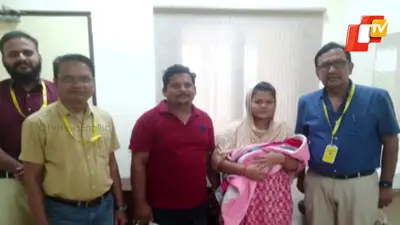Recommended Stories
By Amitava Mukherjee
A dangerous situation may arise in the country if Mamata Banerjee's demand for granting citizenship to Bangladeshi immigrants living in India for more than five years is conceded.
The West Bengal chief minister has called for restoration of the district magistrates' former rights to grant citizenship which, in effect, may facilitate further immigration from Bangladesh.
The situation in West Bengal is so grim that as early as in the 1980s T.V. Rajeswar, a former IB director and former governor of the state, was forced to write in a mass circulation daily cautioning against heavy infiltration from Bangladesh.
His article averred that in the 1981 census the total population growth rate for West Bengal was 23.2 percent while that of the minority community was 29.6 percent. In the same census the overall yearly population growth of the state was 2.3 percent. But in the districts bordering Bangladesh the figures were higher: 2.7 percent in 24 Parganas, 3.3 percent in Nadia, 2.55 percent in Murshidabad, and 2.66 percent in both Malda and Jalpaiguri.
The same pattern continued in the 1991 census. The average population growth rate of West Bengal was 24.73 percent - quite an abnormally high figure. But the districts bordering Bangladesh showed even higher figures: North Dinajpore (34 percent), North 24 Parganas (31.69 percent), South 24 Parganas (30.24 percent), Murshidabad (28.20 percent) and Nadia (29.95 percent). This proved that illegal immigration from Bangladesh was continuing. It is continuing unchecked even today.
The issue is sensitive and must be handled with statesmanship. Banerjee is playing this card a bit rashly with an eye on the coming election as she has reasons to be somewhat worried about a probable Left Front-Congress electoral understanding. But she has picked up the right point from this complicated maze of population movement.
Although Rajeswar had mentioned the abnormal rise of minority population in the 1981 census, he had missed one vital point: exodus of the Hindus from Bangladesh since the birth of that nation. The hard truth is that both Hindus and Muslims are emigrating from Bangladesh to India and there is no point in giving it a communal character.
The only logical reason behind Banerjee's demand for granting citizenship to illegal Bangladeshi immigrants may be her fright that a significant quantum of votes which the BJP could garner in the last parliamentary election may be transferred this time to either the Left or the Congress.
In the last municipality elections, the BJP's share of votes had dwindled by about 50 percent and this portion had found its way to the Left kitty. As most of these municipalities are situated in the Indo-Bangladesh border areas, playing the "citizenship for the immigrants" card may have temptations.
It is likely that the BJP, too, will lap up this issue. During the last parliamentary poll campaign, Narendra Modi held out promises in this regard. Some time back Rajnath Singh, the union home minister, had lamented about the centre's inability on the issue as the BJP does not enjoy a majority in the Rajya Sabha.
The issue has now become a double edged weapon. On the one hand, voting patterns in large numbers of constituencies in 24 Parganas (North) , 24 Parganas (South), Kolkata, Nadia and several districts of north Bengal may be affected by majoritarian sentiments arising out of the issue. On the other hand. the minority community can also influence results in 60-odd constituencies.
West Bengal is now sitting on a powder keg and no one should try to disturb the fragile equilibrium that is still holding the social fabric together. There is no point in crying over Muslim immigration from Bangladesh. Hindus are also coming. In 1951, East Pakistan, now Bangladesh, had 22 percent Hindus. Now the number has come down to a mere seven percent. Where are they going ? The natural answer is India.
Moreover, Bangladesh being a Muslim majority country, it is but natural that there will be a considerable number of Muslims among the emigrants. Trying to give a communal colour to it will be unjust.
In 1951, West Bengal's population had 79.40 percent Hindus and 18.63 percent Muslims. In 1981 the number of Hindus decreased to 77.10 percent while that of the Muslims increased up to 21.55 percent. In 2001, the share of the Hindus in the total population further came down to 72.90 percent, but the Muslims' share jumped upto 25.37 percent.
As per the 2011 census, Hindus now constitute 72.5 percent of the population of the state. No doubt it shows a decline. This declining trend is noticeable in the minority community's share of the total population also at 25.2 percent. But the rate of decrease is slower.
Many experts have however expressed reservations about the sharp decrease in the population growth rate in West Bengal during 2001-2011. According to the 2011 census the growth rate was 17.84 percent in 2001 but nosedived to 13.84 percent in 2011.
Any attempt to give citizenship to Bangladeshi illegal immigrants may seriously jeopardize the political, social and economic life of the country as well as its security scenario too. West Bengal or the north eastern Indian states can no longer accommodate the Bangladeshis. So neither Mamata Banerjee nor any other political party should tinker with such an explosive situation.
(Amitava Mukherjee is a senior journalist and commentator. The views expressed are personal. He can be contacted atamukherjee57@yahoo.com)













